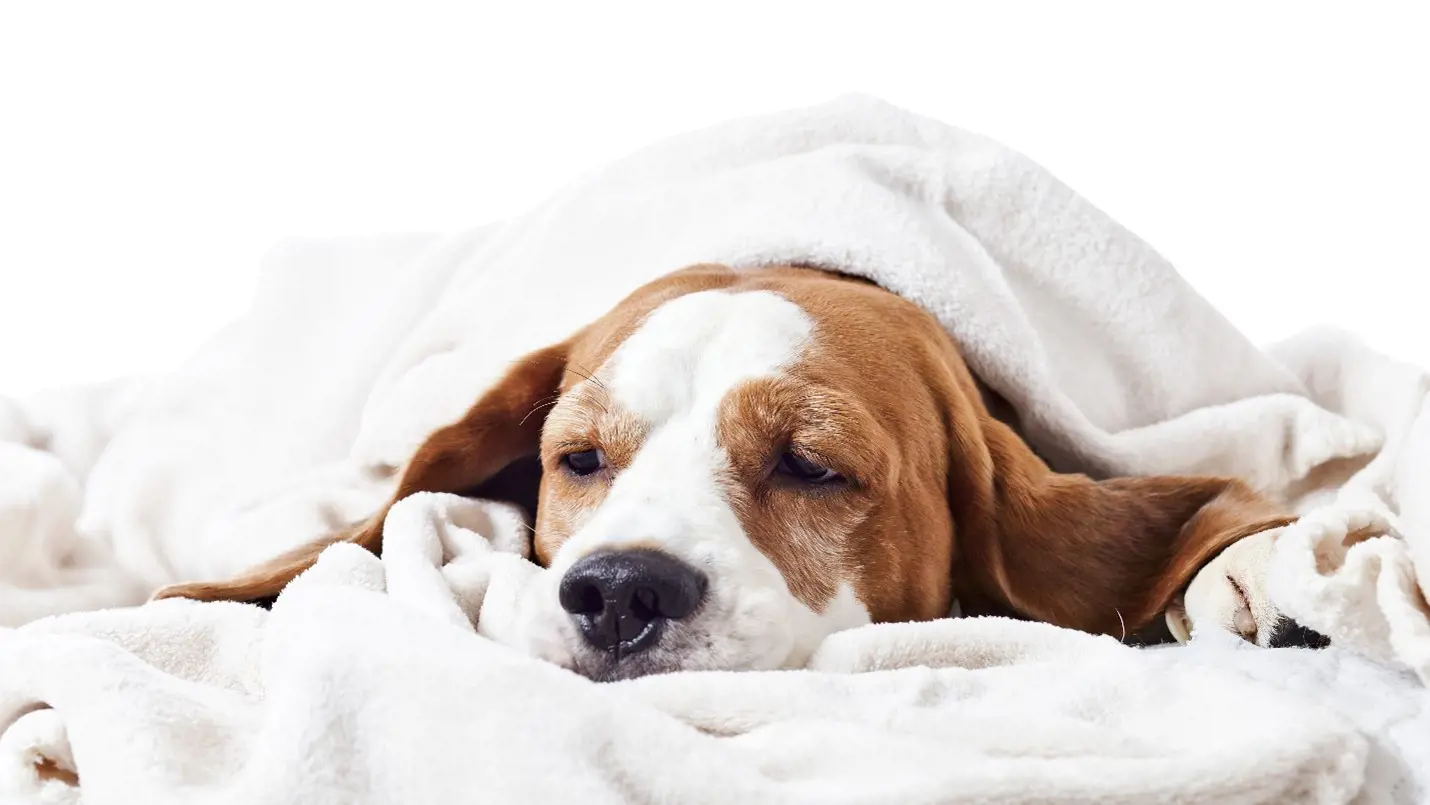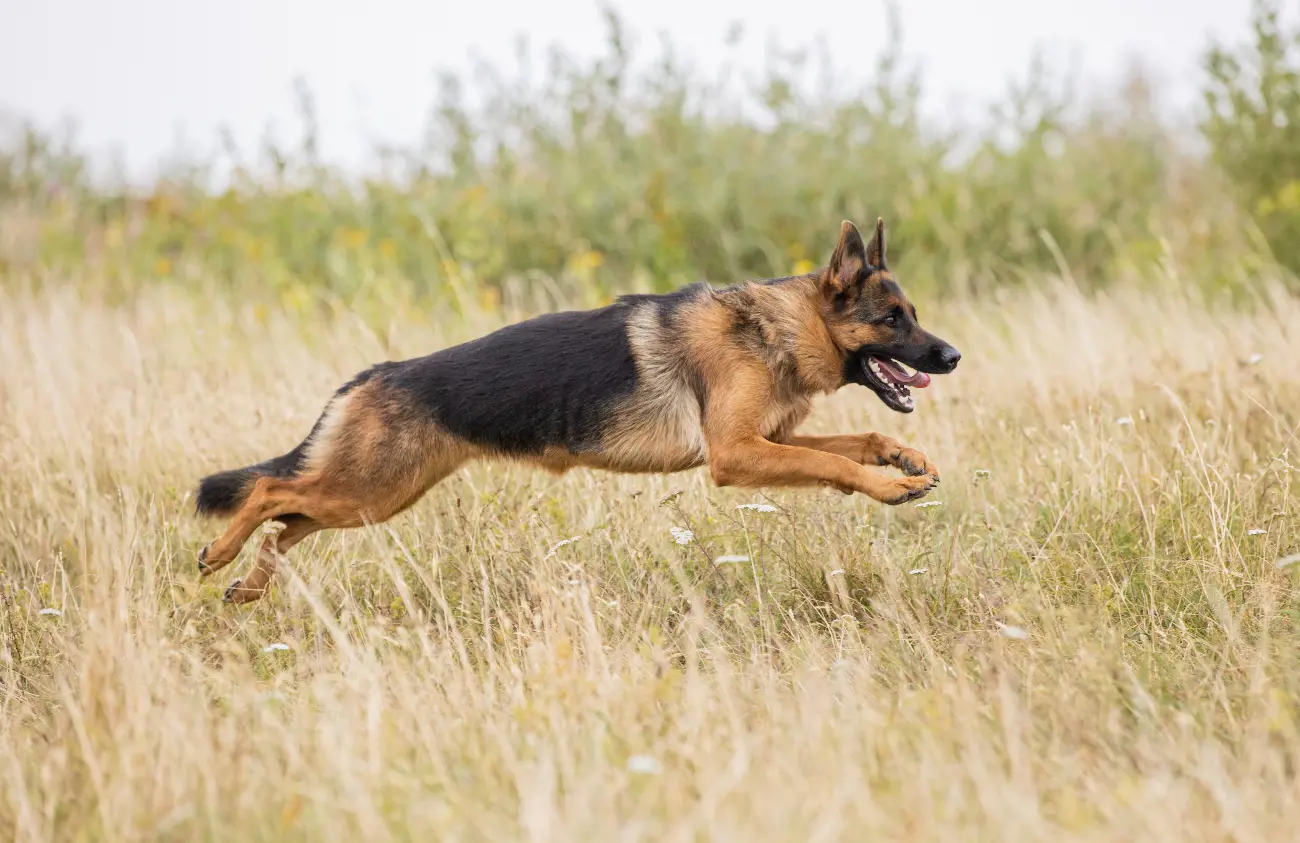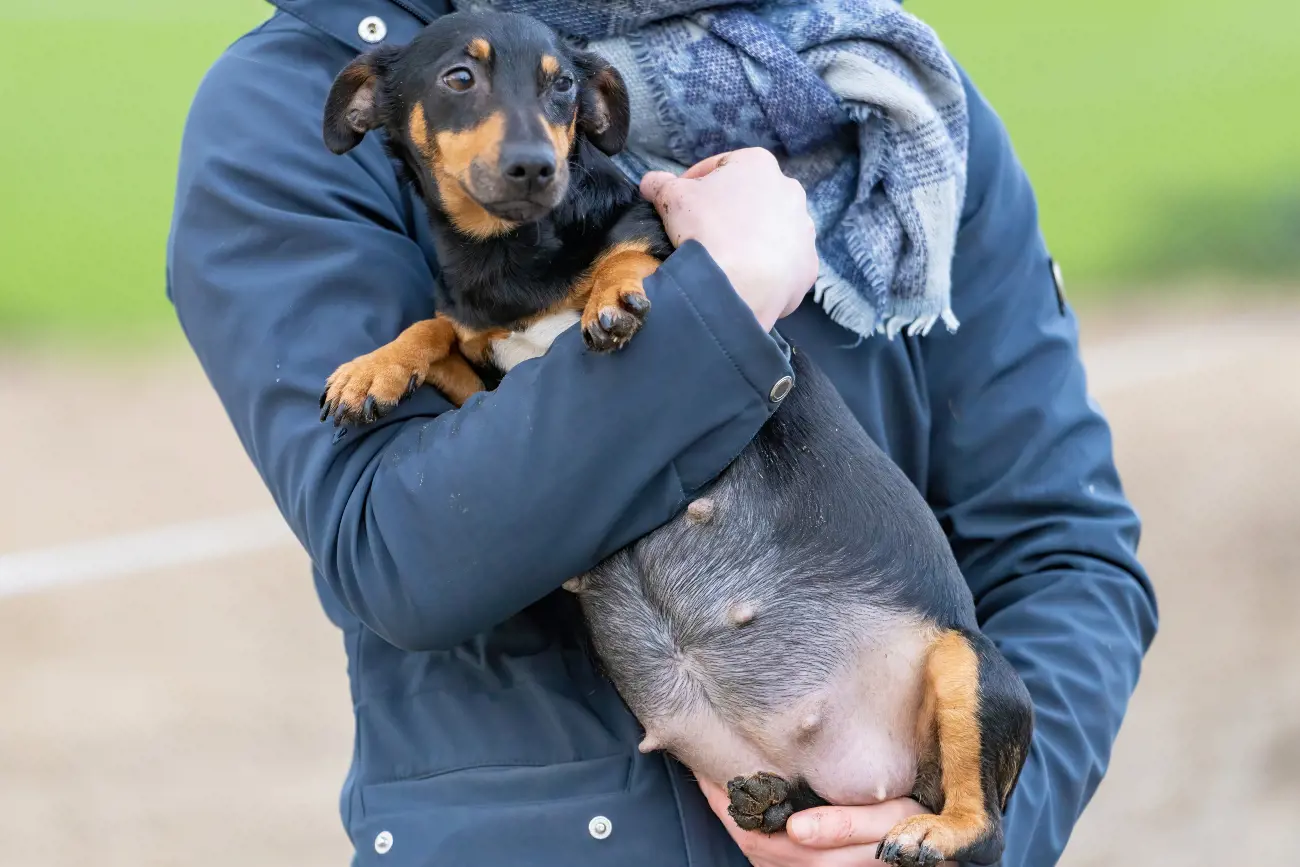What’s wrong with my dog’s bum?
13th October, 2021
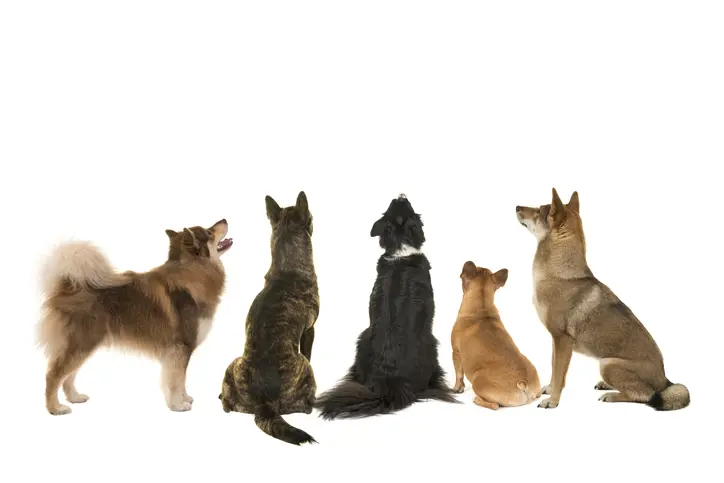
Dog owners aren’t really a squeamish bunch! We can’t be, when we’re prepared to run around after our pets picking up their poop – we quickly become hardened to things that would have previously turned our stomachs. So, with that, it's time to discuss some common doggy bum problems.
Sure, you’re not going to use the following information as a conversation starter over dinner with friends, but it’s important to know what to look out for back there so that should your dog develop a condition, you can act quickly and confidently getting them the help they need.
In taking swift and smart action, you’re not only ensuring your dog doesn’t have to suffer unduly, you won’t be making matters worse – and the vet bill even bigger – by delaying treatment. Often, the speed at which pet owners can get their dog seen by a vet depends on their dog insurance.
If they’re concerned that they could feel it in the pocket, they might be inclined to take a chance and risk aggravating their dog’s condition even further.
Dog insurance from Purely Pets can safeguard you against the costs of unexpected vet bills or treatments that your beloved pet may require if they develop a condition like this. So let’s find out more about some of the common signs.
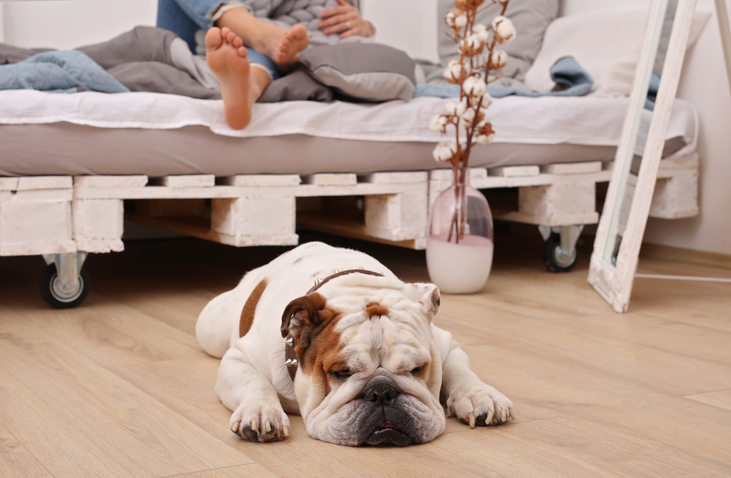
Signs of a problem with your dog’s bum
The good news – if you can call it that – is that if your dog develops a disorder of the anus or rectum, their discomfort will probably be fairly easy to spot. The Kennel Club lists the top symptoms to look out for:
-
A nasty fishy smell – Spending day in, day out in your dog’s company means that you know when something smells off. If you notice a nasty fishy smell coming from your dog – perhaps their bedding has taken on an unusual scent – then this could indicate a problem with your dog’s backside.
-
Dragging their bum on the ground – There is no visual symptom of a bad bum more pronounced than the sight of your dog dragging their backside along the floor. They’re doing so in a futile attempt to free themselves of their discomfort – but it’s more than likely they will need some treatment to remove the aggravation.
-
Having an uncomfortable bum – Other signs include licking or even biting around their anal area. They might also chase their tail (more often than usual anyway), struggle to get comfortable when sitting, or even lick their paws – both front and back – in sheer frustration.
-
Alteration in colour of anal gland fluid – Chances are that you don’t make it a regular thing to check your dog’s anal gland fluid… but it should be a tan/yellow colour with a watery consistency. If it has turned brown or grey and loses some of that watery consistency, your dog might have a bit of a blockage.
As a pet owner, you aren’t expected to be able to diagnose your dog’s bum issue based on the symptoms alone – it’s best to get a professional opinion. Purely Pets policyholders have access to a 24-Hour Vet Helpline if you need some quick advice.
What issue does your dog have?
If your dog is displaying symptoms, it could be any number of issues. Let’s have a look at some of the most common disorders of the rectum and anus in dogs:
Anal sac disease
Anal sac disease is the most common problem dogs experience with their backside. It is caused by a build up of the fluid produced by the the glands (anal sacs) which sit on each side of the anus.
These sacs produce a small amount of foul-smelling liquid which is normally squeezed out during defecation. However, if they become fully or partially blocked, bacterial overgrowth, infection and inflammation can occur
Small breeds are most at risk to anal sac disease; poor muscle tone in obese dogs also contributes to the condition as the glands aren’t emptied in the way they should be when the dog goes to the toilet.
The Royal Veterinary College recently conducted some in-depth research of over 100,000 dogs to get a better understanding of anal sac disorder, as we reported on the Purely Pet’s website.
It revealed that anal sac disorders affected around 4.4% of dogs, and that six breeds in particular had increased risk of anal sac disorders:
-
Cavalier King Charles Spaniel
-
King Charles Spaniel
-
Cockapoo
-
Shih-tzu
-
Bichon Frise
-
Cocker Spaniel
The research also showed that more than one in 10 dogs suffering with anal sac disease required pain relief for the condition, underlining how uncomfortable in can prove to be for your pet.
Commenting on the study, Bill Lambert, Head of Health and Welfare at The Kennel Club said:
“For most dog owners, anal sac problems aren’t exactly a common topic of conversation, but this research demonstrates that they certainly should be. They are one of the top three most commonly diagnosed canine disorders and are literally a pain in the backside for thousands of dogs each year.”
To treat the problem, a vet will often squeeze out impacted anal sacs by hand. If the fluid in the sacs is too hard or dry, an injection of a softening agent may be used. If the glands have become infected, antibiotics might be prescribed.
In the long term, supplemental fibre may be recommended to increase the amount your dog is pooing, as a way of facilitating anal sac compression and emptying. If the problem keeps returning, or a tumour is present, the anal sac might be surgically removed. However, this is something of a last resort.
Perianal fistula
If you’ve noticed a foul smell coming from your dog’s behind, it could be a perianal fistula, a wound in or around the rectum. The cause of the issue can be difficult to work out – but it is most common in German Shepherds, Setters and Retrievers. Dogs aged over seven years old are at higher risk, too.
The hair follicles and glands of the anal area can become contaminated by faecal material, meaning anal sac secretions become impacted, resulting in tissue damage and long-term inflammation of the skin and tissues surrounding the anus.
Low thyroid hormone levels or a damaged immune system may also contribute to susceptibility. Immediate treatment is required by a vet to keep infection from spreading deeper into the body.
In addition to the symptoms listed above, look out for a loss of appetite, lethargy and diarrhoea.
As far as treatment goes, the vet will likely prescribe some medication and cleanse the anal area to reduce inflammation. Stool softeners may also be offered to reduce painful defecation.
However, if this fails to solve the issue, surgery to remove the anal sacs and the diseased tissues may be suggested.
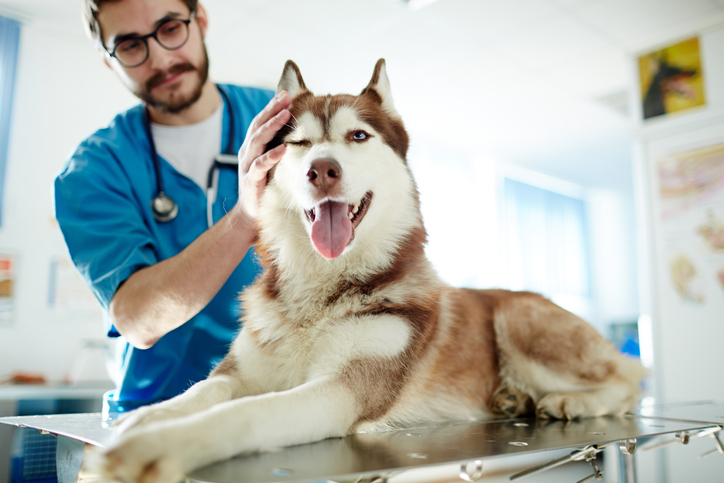
Perianal tumors
Perianal tumors are easy to spot – but the sight of a cancerous growth in the tissues surrounding the anus is something no dog owner ever wants to see. The tumour may prove to be harmless (benign), or it can be aggressive (malignant) with the potential to spread to other parts of the body. It’s for this reason that an immediate visit to the vet is necessary.
Male dogs that have not been neutered are more likely to develop perianal tumours than females – neutering these dogs will cause most benign tumours to go away.
However, if the tumour is found to be malignant, surgery will be required to remove it. Radiation and chemotherapy may also be recommended.
Perineal hernia
Perineal hernia is a type found near the anus. Unneutered male dogs are found to be most vulnerable to a perineal hernia. Some breeds are also more susceptible including Welsh Corgis, Boxers, Kelpies and Dachshunds. However, hormonal imbalance, prostate disease, chronic constipation and pelvic muscle weakness are all contributing factors, too.
Constipation, straining and painful defecation are the top symptoms to look out for. You also need to be wary of the hernia displacing your dog’s bladder and/or prostate gland which can cause a urinary obstruction and may make peeing difficult for your pet.
Hernias can occur on both sides of the anus, but more often than not, they appear on the right side. A rectal examination will determine what organs and tissues are involved, and what treatment is required.
Perineal hernia is rarely life threatening, but you can’t afford to delay treatment if your dog is unable to urinate. In this case, the vet will need to insert a catheter into the bladder or remove the urine using a needle.
Surgery may follow, but this doesn’t always clear up the problem in the long term – up to half of dogs who suffer from a perineal hernia will go on to experience it again in the future.
Rectal and anorectal narrowing
Scar tissue around the anus can cause rectal and anorectal narrowing, which has obvious effects on how a dog poops. The scarring might have been caused by a trauma such as a bite wound or accident, constricting the rectum or anus.
A vet will often attempt to repair strictures, as they are known, by inserting surgical balloons under anaesthesia. They may also inject medications into the affected tissues, before attempting to treat any underlying causes.
Rectal prolapse
A rectal prolapse is not a pretty sight, with one or more layers of the rectum protruding through the anus. Your dog may have an ‘incomplete’ prolapse (the innermost rectal layer is protruding) or a complete prolapse (all rectal layers are protruding).
Particularly prevalent in young dogs that have severe diarrhoea or that routinely strain to defecate, prolapse can also be caused by a number of intestinal, anorectal or urinary diseases. It’s also common for a perineal hernia (see above) or other similar condition to lead to a prolapse.
A prolapse is fairly easy to diagnose; a mass protruding through the anal opening will usually be visible, but if it’s only a small or incomplete prolapse, it can be harder to spot for the untrained eye.
As far as treatment is concerned, a vet will often attempt to manually replace the rectum under general anaesthetic. To prevent prolapse happening again, the anus will usually be partially closed with stitches for a week.
Following the procedure, a moist diet, combined with a stool softener, will be recommended. However, you need to be alert to your dog experiencing diarrhoea in the period after surgery – your vet will advise you accordingly should this happen.
Rectal tears
If your dog ends up swallowing a sharp object or they get bitten around the bum by another dog, this can result in a tear. As you can imagine, a rectal tear makes going to the toilet pretty painful for your dog – they might be reluctant to defecate leading to constipation and straining. Rectal bleeding is the most obvious symptom of a tear.
Swift treatment is required to avoid infection setting in, while the wound will need to be closed immediately. This means cleansing and stitching the tear, followed by a course of antibiotics and some stool softeners to make passing poop easier for your dog post-surgery.
Dog insurance from Purely Pets
As a caring pet owner, you won’t want your dog to suffer for too long should they develop a problem with their bum. However, it’s much easier to stay calm and make the best choices for your dog knowing that they are covered with comprehensive dog insurance.
Award-winning dog insurance from Purely Pets helps you to cover the cost of unexpected vet bills or any treatments and medication your dog may need.
Other benefits of taking out a policy with a specialist like Purely Pets include:
-
24-Hour Vet Helpline
-
Online policy management portal
-
Cover for vet fees from £1,000-£15,000
Purely Pets can help you find the most suitable dog insurance for your beloved pooch, with 15 levels of lifetime cover to choose from.
Get a quick quote for dog insurance today.
Policy benefits, features and discounts offered may very between insurance schemes or cover selected and are subject to underwriting criteria. Information contained within this article is accurate at the time of publishing but may be subject to change.
Helpful Pages
Recent Posts
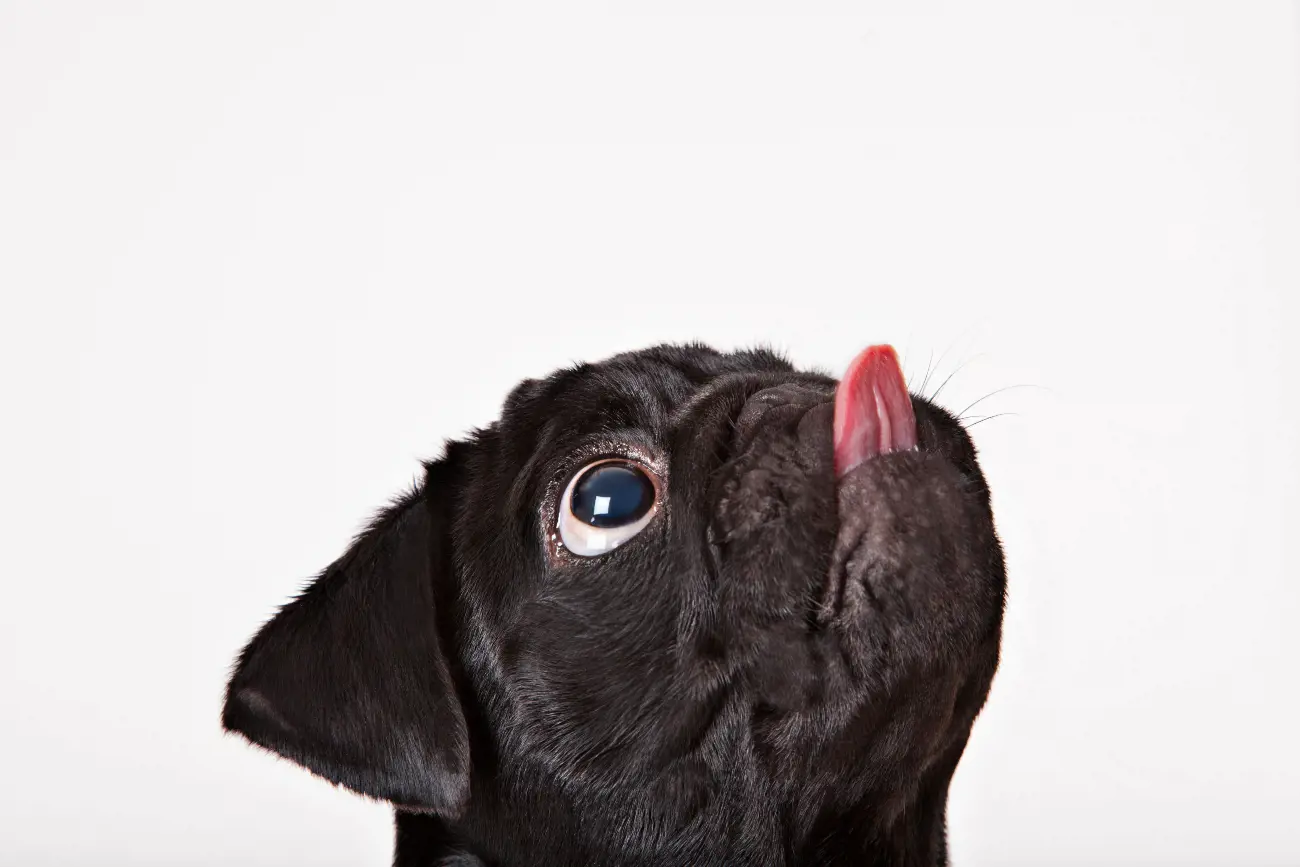
Why do Pugs lick the air?
02/10/24Pet Insurance Quote
- 98% claims paid *
- Claims paid directly to vets
- 24/7 vet video consultations
- Interest free monthly payments

